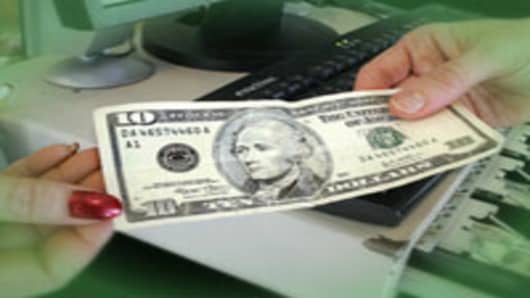U.S. retail sales weakened modestly in April, but outside the hard-pressed auto sector they were more resilient than many economists had forecast, a government report showed on Tuesday.
The report echoed recent data showing underlying economic durability, including fewer job losses in April than feared and a surprisingly strong pace of first-quarter productivity that buoys hope for corporate profits.
The Commerce Department said overall retail sales declined 0.2 percent but that excluding cars, sales rose 0.5 percent. Economists expected total sales to slip 0.1 percent, but had forecast just a 0.2 percent gain outside of autos.
"I think it's a report that tells you the economy is very weak, but if we are in a recession it's going to be a real short one," said Robert MacIntosh, chief economist at Eaton Vance in Boston.
Analysts hope that consumer spending will at least cushion an economic slowdown and offset the dampening impact of falling housing prices, particularly with an added boost coming from government rebate checks being sent to about 130 million taxpayers under an stimulus plan.
The economy is forecast to grow at a scant 0.2 percent annual rate in the second quarter, slowing from the anemic 0.6 percent growth rate in the previous two quarters, according survey of economists released by the Philadelphia Federal Reserve Bank on Tuesday.
The retail sales data helped boost the dollarwhile prices for U.S. Treasury debt securities fell as investors bet it reduced chances for more interest-rate cuts.
Stocks were down modestly in early-afternoon trading, although the retail sales report helped ease the losses.
Import Inflation
Other data highlighted the squeeze on consumers, who have caught between rising food and energy prices and a crumbling housing market.
The Labor Department said U.S. import prices climbed 1.8 percent in April as prices for both petroleum and non-petroleum products climbed, feeding worries about the potential for inflation.
Import prices have jumped 15.4 percent over the past year, the biggest 12-month gain since the government began publishing the data more than a quarter century ago.
Separately, the National Association of Realtors said median values of existing single-family homes in metropolitan areas fell 7.7 percentfrom levels a year ago.
The Federal Reserve has cut official interest rates 3-1/4 percentage points to 2 percent since September to shield the economy from a credit crunch sparked by the housing crisis, hoping to keep consumers from choking off the spending that fuels two-thirds of U.S. economic activity.
Fed Chairman Ben Bernanke, speaking by teleconference to a Federal Reserve Bank of Atlanta conference in Sea Island, Georgia, cautioned that strains remain in the nation's financial markets.
He was one of the Fed officials scheduled to speak on Tuesday, several of whom are expected to warn that inflation pressures are mounting rapidly.
Fed to Pause?
Analysts said the retails sales numbers might increase chances that fed policy-makers will pause their rate-cutting campaign and focus more closely on controlling inflation.
"Overall, this supports the view that the fed will hold interest rates for the next two to three (policy) meetings, said Ron Simpson, director of currency strategy for Action Economics in Tampa, Fla.
In April, sales of building materials gained 1.9 percent, more than reversing March's 1.5 percent fall. General merchandise store sales were up 0.5 percent, well ahead of March's 0.1 percent rise.
Lofty gasoline prices that have pinched consumers' pocketbooks and reduced their interest in new cars.
Auto dealers suffered a 2.8 percent drop in sales during April, adding to the 0.5 percent decline posted in March. Gasoline stations reported a 0.4 percent decline in April sales after a 1.6 percent rise in March.
The new level of cost consciousness turned up in operating results for Wal-Mart Stores, which rose 7 percent in the first quarter ended April 30. The largest U.S. retailer noted its customers were seeking bargains on necessities such as food and were straining from paycheck to paycheck.
"Even if food prices are inflating these figures a bit, consumers still appear prepared to keep spending as long as deals can be had and Uncle Sam foots some of the bill," said Michael Gregory, an analysts with BMO Capital Markets.


